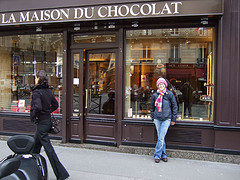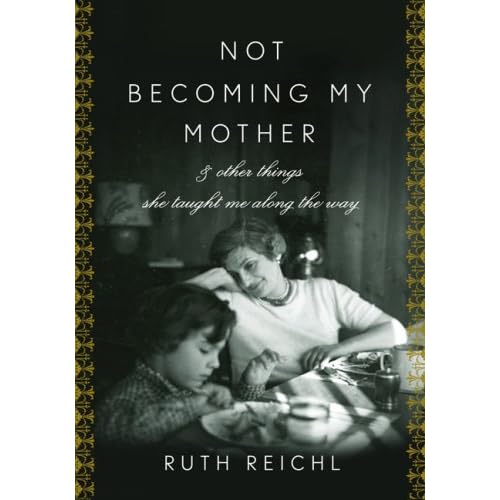 Secretary's Day was last week, and I wanted to do something a little bit out of the ordinary for the person who helps me keep it all together at work. So, while other folks in my office gave their secretaries flowers and wine, I made these home made these chocolate truffles for my secretary.
Secretary's Day was last week, and I wanted to do something a little bit out of the ordinary for the person who helps me keep it all together at work. So, while other folks in my office gave their secretaries flowers and wine, I made these home made these chocolate truffles for my secretary. This recipe comes from Robert Linxe of La Maison du Chocolate in Paris.
This recipe comes from Robert Linxe of La Maison du Chocolate in Paris.There are only three ingredients in this recipe: chocolate, cream and cocoa powder. The Book is very particular about the particular brand of chocolate and cocoa to use. Apparently, Linxe uses Valrhona chocolate, and editors of The Book "didn't even think about substituting a more widely available chocolate." Well, I couldn't find Valrhona, and anyway, I've noticed that in recent years, grocery stores have been stocking more and more varieties of premium chocolate with various percentages of cacao. So, I went with Ghirardelli, and I was still very happy with the results.
First, I finely chopped some of the chocolate and put it in a Pyrex bowl. Then I brought some cream to a boil and poured it over the chocolate. I slowly stirred it until the chocolate melted and it was a smooth genache. The Book says to be careful not to stir too fast to avoid incorporating any air into the mixture. I let the genache stand for about an hour until a spoonful scooped from the bowl kept its shape. Then I lined a baking sheet with parchment paper and spooned the ganache into a pastry bag. I piped little mounds of the genache onto the baking sheet and put it in the freezer for a little while.
After the genache set, I melted some more chocolate in a metal bowl set over a saucepan of boiling water. I put some Ggirardelli cocoa powder in a bowl and got myself organized for some candy making. First I put on a pair of disposable plastic gloves. Next, I smeared some of the melted chocolate on one of the gloves. Working one at a time, I rubbed each of the ganache balls with some melted chocolate and dropped them into the bowl of cocoa. I gently lifted the truffles out of the cocoa with a fork and put them into a sieve and carefully tapped off the excess cocoa. I kept working until I had finished all of the truffles and until I was up to my eyebrows in chocolate. Seriously, these truffles are are not particularly difficult to make, but they are messy!
Since I made these as a gift, I was only able to sample a couple of them. And the few that I did eat were amazing. The first thing that you taste is the intense, earthy flavor of the cocoa power. Next, there's the slight crackle of the thin layer of hardened chocolate surrounding the filling. And finally, there's the cool, creamy, rich and velvetly genache. This is a truly luxurious treat. Well worth the effort for a special occaion or a special person.
Curiously, The Book specifically says that you should not try to double this recipe. If you want more, and I do want more, you should make two batches.
Date Cooked: April 19, 2009
Degree of Difficulty: Medium
Rating: A

















